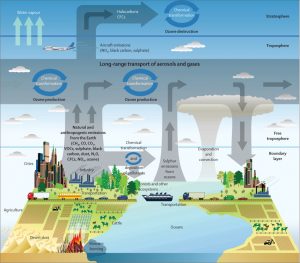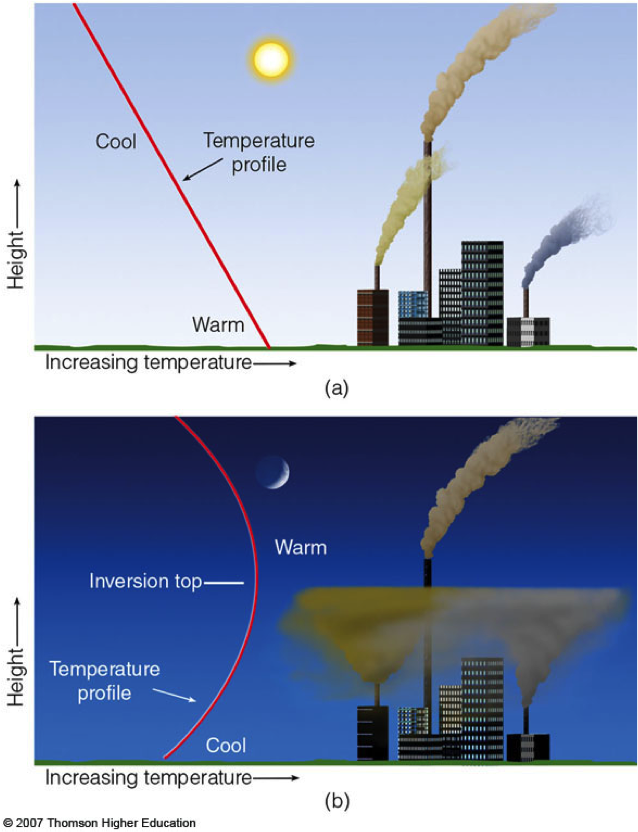For weather forecasters, air quality remains one of the trickier things to predict. Several factors go into making good air quality forecasts, because so many weather events influence air pollution. As Houston heats up and air quality becomes a greater concern this summer, we wanted to talk a little about what air pollution is, and the part weather plays in it.
Primary vs. Secondary pollutants
Air pollution consists of two types: primary and secondary. Primary pollution comes directly from a source, like car and ship exhaust, power plant emissions, fires, etc. Secondary pollutants, on the other hand, aren’t emitted directly into the air. Instead, chemical reactions in the atmosphere create these pollutants. Ozone, for example, forms when sunlight interacts with nitrous oxide, carbon dioxide, and other “volatile organic compounds”, or VOCs. Ozone in the stratosphere (think of the ‘ozone hole’) acts as an invisible sunscreen layer for earth, preventing UV rays from reaching the surface. However, ozone near the surface, or ‘smog’, acts as a respiratory irritant. The more sunlight we get during a day, the more potential there is for smog.

Knowing where pollution comes from plays into forecasting pollution. For example, we know that, because of car emissions, weekdays are worse than weekends, and pollution is worse during morning and evening commutes. Houston, which already has a regional population of 6.7 million people, also deals with emissions from refineries,factories, and the ship channel.
Weather and air pollution
Several weather patterns and phenomena influence how bad air pollution will be on a given day. Wind is obviously the biggest factor. Strong winds will blow away pollutants faster than calm winds, and turbulent winds mix the polluted air with cleaner surrounding air. This mixing helps dilute the air. On days where the winds are calm, forecasters can therefore say that pollution may higher. The direction of winds also influence pollution. If you’re downwind from an urban or industrial area, you would expect to see more pollution than if you’re upwind from that same area.
The stability of the atmosphere also affects pollution. A temperature inversion occurs when the temperature of the air increases as you rise in elevation. Normally, temperature decreases as you go up. This inversion can trap pollution near the surface, when the particles would normally rise and disperse in the air.

These are two of the major factors we look at when forecasting air pollution. Severe air pollution days occur when one or several of these weather conditions exist:
- many sources of pollution, including cars, factories, and maybe a shipping channel or two;
- an area of deep high pressure (which keeps the winds light);
- light surface winds;
- strong inversions, which trap pollution near the surface;
- clear skies, which help cause those inversions at night;
- sunlight, for the production of smog;
- no precipitation, which can ‘cleanse’ the air of particulates;
- and topography (which doesn’t have as much of an influence in Houston, but does somewhere like Los Angeles).
As you can see, a lot goes into forecasting air pollution. In Texas, the Texas Commission on Environmental Quality provides forecasts for the entire state. To learn more, or get a daily forecast discussion of Texas air quality, check out their website.
You can view a real time map of ozone levels in Houston at this website:
http://houstoncleanairnetwork.com
Thanks for that link! Once we get to those hot, still days, there’ll be a lot more red on this map, unfortunately.